There can be your advertisement
300x150
10 Critical Mistakes Designers Make in Visualization
The desire to do everything yourself, lack of action plan, trusting subcontractors, and 7 more mistakes you should not make if you want to quickly and successfully approve a project
1. Not Having a Prepared Base
When starting work on a new 3D project, you need to understand that at the initial stage, the client does not require a full demonstration of the project with furniture selection, colors, and item numbers. Therefore, at the first stage, it is sufficient to show a concept. With proper presentation and preliminary work with the client, this approach is often accepted without major changes.
Use templates: texture bases, modern and classical furniture, materials, accessories, and fully ready scenes.
There is no need to model items selected from a catalog, including furniture and accessories. If you do this, the time spent creating an image can easily exceed the design itself, becoming a meaningless activity. Instead, use templates: texture bases, modern and classical furniture, materials, accessories, and fully ready scenes.
As a professional, you must prepare in advance and have all these elements in your arsenal to quickly combine the necessary elements without spending time searching for them when project time is limited and, aside from visualization, you have many other tasks. This approach will significantly speed up your work.

Design: Maria Fadeeva
2. Making Furniture Objects Yourself
Even if the client requires more than just a concept and wants to see already selected furniture in the project, do not model it yourself. There are large databases of resources with free and very cheap furniture models that include all major global manufacturers and standard classical types. When modeling furniture yourself, a designer spends as much time on one chair or sofa as they would on creating the entire design and implementing it in 3D without furniture. This is unjustified and unnecessary work.
Self-modeling of furniture is unjustified and unnecessary work.
If you still need to create exclusive complex furniture not available in databases, it is simpler to order its production from a professional modeler who will make it as quickly and cheaply as possible. So cheap that sometimes it is easier not to even remember where you have such a model stored, but rather order the full set for the entire apartment. Usually, designers have a budget from the client specifically for visualization if they offer this service. The desire to do everything yourself, even if you know how to (especially if you know how to), must be eradicated.
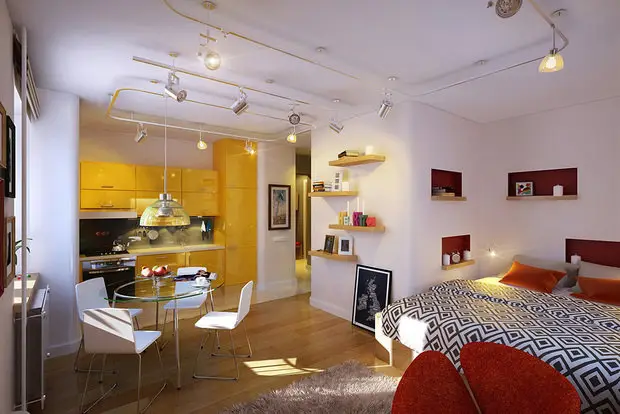
Design: Daria Kholodova
3. Excessive Enthusiasm for Learning 3ds Max and Vray
Believe me, you don't need to know 100% of the software features and buttons in 3ds Max. This will be even less than 50%. You will be shocked, but according to my estimates, you can remember only 3–5% and this will be enough for fast and productive work. It's important to know which 3–5% are needed specifically for designers in interior design work. If briefly, these are simple modeling operations based on splines, as well as the extrusion and shape modifiers.
Believe me, you don't need to know 100% of the software features and buttons in 3ds Max.
If you are a beginner, develop in this direction. The same applies to Vray (an external module for setting up lighting). At present, an almost perfect method of visualization has already been developed. The dependence on computer power is minimal. You can simply apply pre-programmed settings and, most importantly, lighting logic. The images will be of high quality, ready for client presentation.
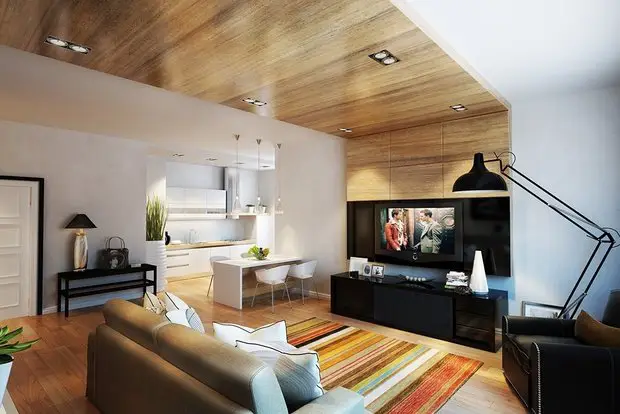
Design: Artem Boldyrev
4. Lack of Clear Work Algorithm
Sometimes the sequence of actions determines the speed and absence of back-and-forth movements, which leads to time loss throughout the project. Inconsistency and jumping from one section to another during work can significantly prolong 3D and overall design project work. For example, setting up lighting and materials at the geometry creation stage is a completely unnecessary step.
Sometimes the sequence of actions determines the speed of work.
It's clear that many want to see what will be achieved at the end, but honestly speaking, this is meaningless: lighting will change again after applying final textures and adding all necessary furniture and artificial light sources. The exception is a white model for geometry approval with the client at the first sketch stage. It can be made at the very beginning, only with daylight. This will be enough.

Design: Anna Rayzikh
5. Excessive Trust in Subcontractors
If a designer decides to delegate part or the entire project, in most cases, they will face very unpleasant surprises. Usually, the project will not be completed according to requirements, will not be completed on time, or will not meet the expected quality. Your subcontractor will assure you that it's just a little more work and everything will be ready. Don't believe the words – check the facts.
Today it is not a problem to find an executor: 3D is done by everyone, even schoolchildren.
When delegating, you must not only create but also constantly use a task assignment and result acceptance system. You need to understand the details yourself to know what you're accepting and what errors a modeler might make.
I will say immediately that according to statistics, when searching through typical methods, about 1 in 20 people turns out to be more or less reasonable and suitable for work. Today it is not a problem to find an executor: 3D is done by everyone, even schoolchildren. The problem is finding someone who meets the stated requirements and truly delivers quality work on time.
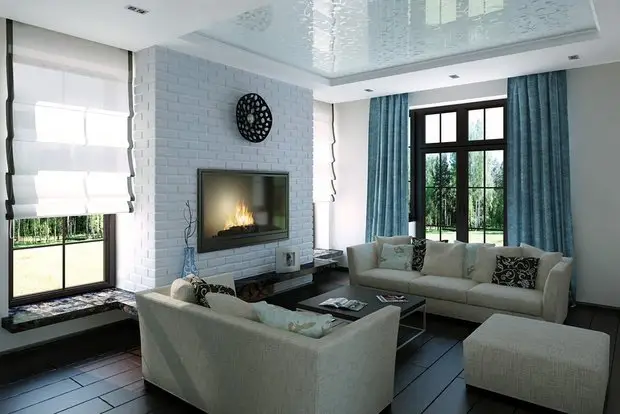
Design: Irina Slesareva
6. Free Redoing of Work According to the Client's Wish
A serious problem for beginners. I encountered it myself. When the client goes through variants not by discussing but by asking to show them in 3D visually, one or two, even five variants can be changed, and then usually the return to the first or second variant makes all subsequent work pointless. It's important to explain the client's goal at the beginning of the project.
It is important to explain the client's goal at the beginning of the project. It is not about seeing variants, but about finalizing the chosen idea. This is a fine line of work that should be tactfully adhered to. Following this line without risking losing the client will help with a detailed preliminary analysis.

Design: Angelika Moroz
7. Obsession with Details
Often, after mastering the 3ds Max program, we get carried away by small details, creating images not for approval but working on technical details or minor improvements, forgetting about time. This enjoyable activity can take hours or nights (this happened to me). The images created technically turn out very lively and active, but only slightly better than what was almost perfect a few hours ago.
Designers should focus first on the frame composition, camera, and lighting...These changes can only be detected by professional 3D visualizers. Designers should focus first on the frame composition, camera, and lighting – everything that will show the client the idea of the interior rather than the skill of using the program. Ideal detail and artistic presentation are also necessary, but this is a separate profession and a separate job. For printing, exhibitions, banners, advertising. This is not the designer's work. Do not mix these two categories.
Often, after mastering the program well, it is hard to resist the temptation to dive into all details and experiment, but I recommend understanding why you're doing this – out of necessity or for personal satisfaction. For work or hobby? Constantly asking yourself this question will help you control the situation.

Design: Vasily Chorny
8. Slow Work Speed
If you decided to do visualization yourself, take care of speed. With an inefficient approach, you can spend much more time creating 3D than the project and situation require. It's best to choose and practice your work sequence. Something you do yourself, something your assistants do, some elements are critically important to you, others can be replaced with analogs from a ready base.
If you decided to do visualization yourself, take care of speed. Such distribution before starting helps and eliminates unnecessary actions during the process. Especially when only a few hours remain until the next stage is due, and you haven't finished the final image version. You end up going to the client or presenting an incomplete variant, or postponing the meeting. Both options automatically reduce your authority in the client's eyes.
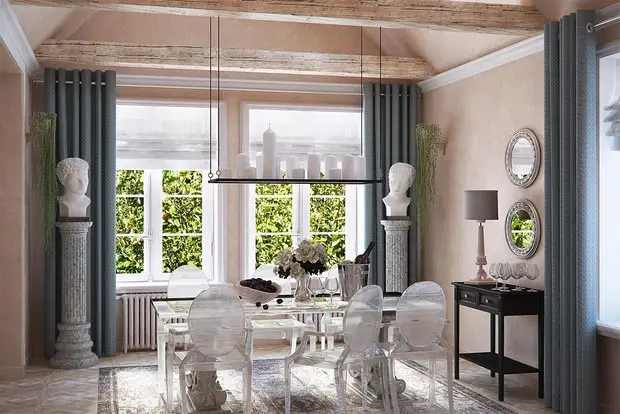
Design: Vyacheslav Koretsky
9. Showing Incomplete or Intermediate Visualization Variant
Never do this. Fully complete the project, ensure you like everything as a designer, and only then show it for approval. Preliminary variants can work, but not in case of 3D graphics in 3ds Max. The reason is that you create a photorealistic image, and the client will not involuntarily evaluate it as completed.
Ensure you like everything as a designer, and only then show the project for approval. You can't explain on fingers that the light is not fully set, that the tiles will shimmer like plastic rather than ceramic, and that this is not a large brown spot on the floor but veneer parquet. All of this needs to be fully worked out. Otherwise, if you show a sketch presentation in SketchUp or a white model, schematics will suffice. Showing an incomplete visualization variant to the client risks having the client start changing the interior because it feels uncomfortable. Or worse for you – the client will doubt the correctness of the designer's choice.

Design: Eldar Mendelev
10. Lack of Visualization
Visualization is a standard service that helps both the client and the designer find common ground and approve the project faster. No other technology shows the correct distribution of light in space, even hidden, as well as material shine. Often, lighting design and reflections make up to 50% of the effect and interior design.
With visualization, approval will be as fast as possible. With visualization, you won't have to explain everything in words – just show how your idea looks in reality. Approval will be as fast as possible. It's also not hard to master this technology now.

Design: Anton Bulgakov
3 Rules for Successful Designer Work in Visualization
1. Create the Design in 3D from the Start
This is the most excellent way of designing. You work in two directions simultaneously: creating a task for your subcontractors (3D model) and for yourself and the client. In the 3D model, you can immediately incorporate engineering communications, check all joints in all dimensions and nodes: ceiling-to-wall junctions, ventilation grille view, and many other details.
With the right approach (knowledge of programs, availability of model bases, coordinated idea), the speed of such design increases many times. Instead of a month, design takes only several days.
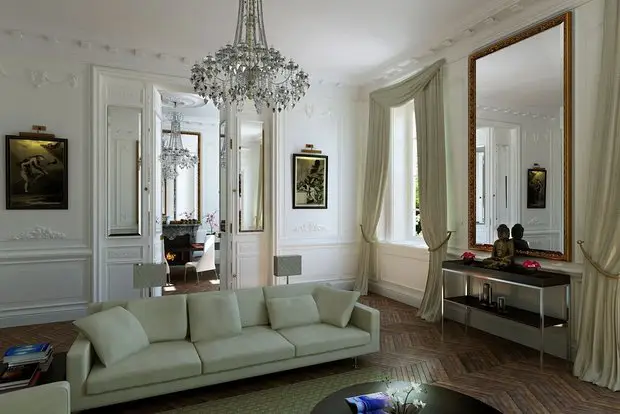
Design: Stanislav Orehov Design School
2. Delegating Routine Tasks
I strongly recommend hiring assistants for routine tasks. Ideally, a designer's task and competence reduce to two types of creative activity:
- Communication with the client, understanding the task, and delivering the work;
- Creating and approving the design concept based on data obtained from client communication.
The third, organizational role of the designer replaces other stages in full design project execution. We recommend delegating all non-key tasks to designers. The more a designer focuses on their main tasks, the more projects they can handle without compromising quality and missing deadlines, with breaks rather than sleepless nights.
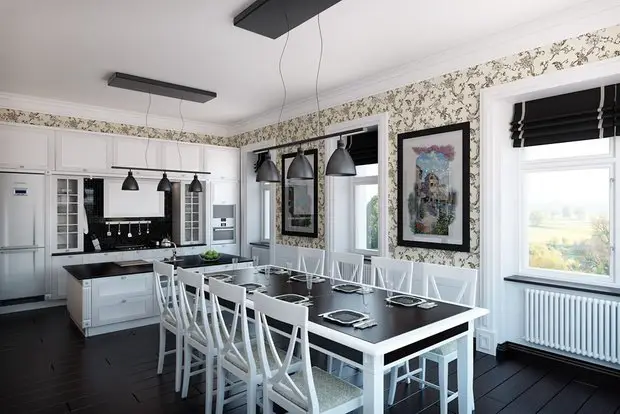
Design: Stanislav Orehov Design School
3. High-Quality Frame Setup, Attention to Details, and Lighting Adjustment
What clients actually pay for in visualizers. This accounts for up to 20% of the project cost. If you're doing visualization yourself, I suggest starting with acquiring this skill. If camera setup and attention to details are already within your competence, then setting up lighting in 3ds Max can significantly speed up all design creation processes. Setting up lighting in a ready scene takes a professional about 20 minutes. These 20 minutes are the most important in a visualizer's work. What costs not only your money but also time spent on delegation and control.
Mastering this tool will be useful for every designer. You will be able to fully complete your project even if you have no assistants at all. This versatility, on one hand, contradicts the previous point about delegation, but on the other hand, gives necessary confidence in your abilities and understanding that even if all subcontractors let you down, you will still complete and approve the project for the client.

More articles:
 Choosing a Sink for the Bathroom: 7 Options from Different Materials
Choosing a Sink for the Bathroom: 7 Options from Different Materials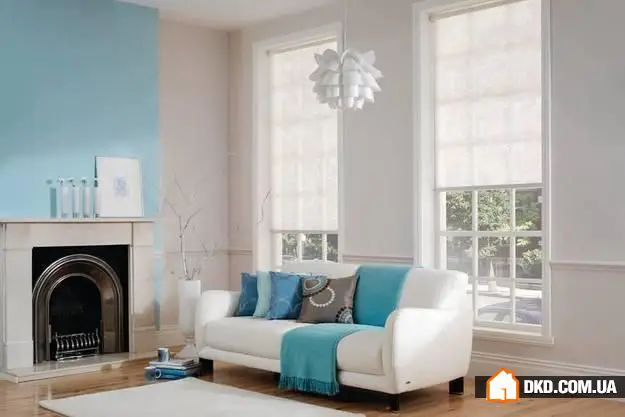 Without Curtains: 10 Original Ideas for Window Decoration
Without Curtains: 10 Original Ideas for Window Decoration Ideal Bedroom Design: Tips from Professionals
Ideal Bedroom Design: Tips from Professionals Everything You Need to Know About Self-Installing Mosaic
Everything You Need to Know About Self-Installing Mosaic 10 Advantages of Plastic Windows You Should Know
10 Advantages of Plastic Windows You Should Know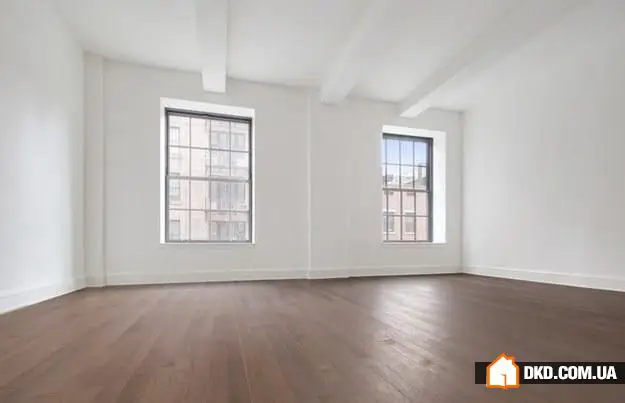 Tips to Level Walls with Gypsum Board Yourself
Tips to Level Walls with Gypsum Board Yourself Pro Secrets: How to Make a Bed Like in a Good Hotel
Pro Secrets: How to Make a Bed Like in a Good Hotel How to Save Money on Renovation: Painting Walls and Ceiling Yourself
How to Save Money on Renovation: Painting Walls and Ceiling Yourself